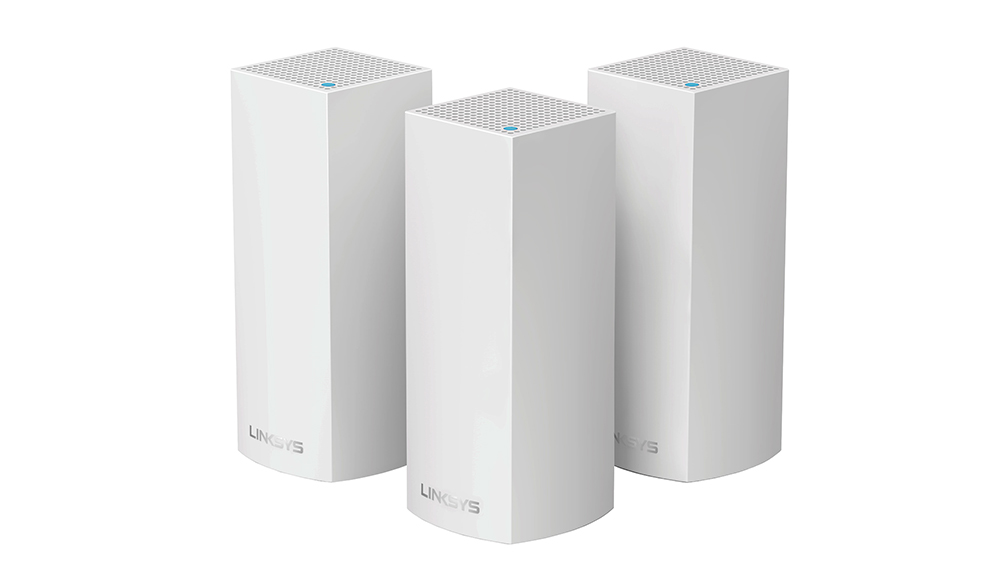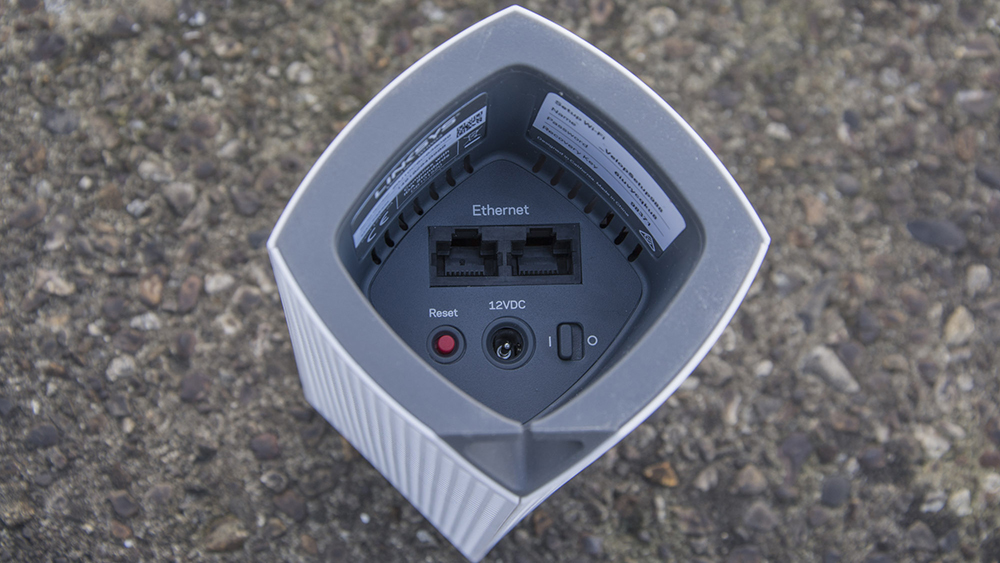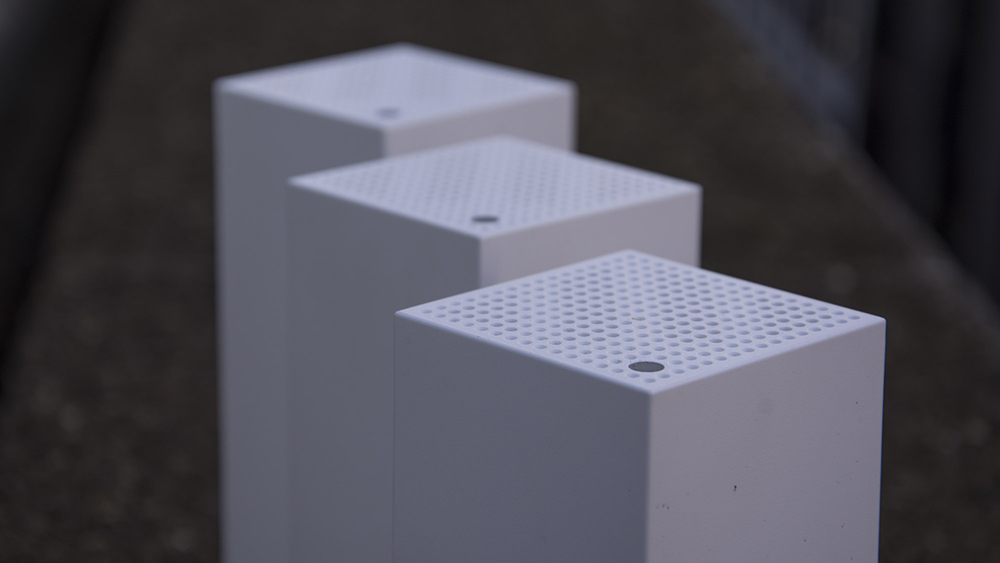Linksys Velop review
Networking without the hassle - but power-users beware

The Linksys Velop does a great job of making wireless networking easy and hassle-free but it's rather pricey, and a lack of ethernet ports and slightly lacklustre speeds may put off businesses with more advanced needs
-
+
Easy setup; Small footprint; Attractive design
-
-
Limited ethernet ports per node; Slightly disappointing speeds; Expensive

Setting up wireless networks can sometimes be a pain. On top of clunky configuration interfaces, you've often got to contend with signal dropoffs and black spots, particularly if your building has thick walls. Mesh Wi-Fi products supposedly eliminate this problem, by using multiple interconnected nodes to create a single, seamless network.
The Linksys Velop is one such product, and is intended to take the fuss out of the often-complicated process of wireless networking. While it's primarily designed for a consumer rather than enterprise use-case, the Velop has some interesting applications for small businesses who want to invest in a mesh Wi-Fi network without the associated hassle of setting up business-grade IT solutions.
Design
Routers are rarely attractive, but this product definitely emphasises form as well as function. Linksys says the Velop is "designed to disappear", with the aim being for it to blend into your home decor.
Amazon uses a similar tactic with the Echo, and the two products share more than a few design cues. Like the Echo, the Velop opts for a sleek, minimalist shell rather than the squat, boxy chassis usually seen on networking products.
Comprised of a tall, square column of high-quality white plastic, the Velop has a footprint that the company claims is 88% smaller than traditional routers. We'd be willing to agree with this - this petite router will fit very well into even the most tightly-packed offices. It looks good, too; it's simple, elegant, and much more visually appealing than most other wireless equipment, which tends to either be bland and unprepossessing or over-designed to within an inch of its life.

It does a pretty good job of blending into a kitchen or living room but if you're planning to use it in a small office environment, that's probably not going to do much to sway your opinion either way... We did like the cabling setup, however, which involves plugging everything into a recess in the base and then neatly feeding it back out through a slot in the corner. It's a pleasing way of minimising cable clutter, which is always a good thing.
Setup and management
Unfortunately, we noticed one problem straight away. The Velop's plug is slightly wider than most others, meaning it won't fit comfortably in multi-way extensions. This can be remedied by finding some space on a wall socket, but it's an annoying inconvenience all the same.
Other than that, the setup process is easier than falling off a log. Done entirely through the Linksys app, the step-by-step process takes care of most of the configuration for you, and we got our network set up in no time. Adding new nodes to an existing network is simple too, meaning expansion shouldn't be a problem.
The management console (offered solely through the app) is good, too. It provides key settings and information such as connected devices and network status in a simple, easy-to-understand layout. It highlights more commonly-used configuration options like guest access and parental controls rather than in-depth networking protocol settings, but options like port forwarding, MAC filtering and IP settings are all still available through sub-menus. Of course, it can't rival the granularity offered by more high-end enterprise products, but for basic configuration it should more than suffice.
One setting that's notable by its absence, though, is channel and band switching. Although the Velop is a tri-band router, there's no way to specify which band you want to use - instead, the software takes care of all that, and will intelligently switch bands and channels on the fly in order to provide the best coverage.
We didn't notice any problems with interference while testing the Velop, but if manual channel control is a must-have, then you're out of luck.

Another area the Velop seriously falls down in is physical connectivity. Each node features two gigabit ethernet ports at the base, but if your current networking setup involves a mess of hardwired connections, this will likely get eaten up very quickly. You could always augment this with an ethernet switch, but adding extra gear to a product that supposedly takes the hassle out of networking would seem to defeat the purpose.
Price is also a major problem. A triple-pack of nodes will set you back by almost 500, which is somewhat less than ideal, particularly as BT is offering a similar solution for just under 300.
Performance
The Velop uses three internal radios - one on the 2.4GHz band and 2 on the 5GHz band - with MU-MIMO technology and beamforming for better speed, range and performance. The theoretical ceiling for wireless speeds is 50MB/sec on the 2.4GHz spectrum, rising to 108MB/sec with 5GHz. Sadly, as there's no way to specify which band your device uses, you'll have to leave this up to the router.
Performance was very capable when we tested it with iperf. We clocked a maximum throughput speed to the modem-connected node of over 50MB/sec at close range, with around 35MB/sec for the ones upstairs. The signal dropped off rather substantially at range, however, and we measured a throughput of around 10MB/sec over a distance of 25 feet.
Coverage is good, too. Despite thick walls usually leading to numerous black spots in our testing environment, three well-positioned Velop nodes meant we had excellent coverage across the whole area, although throughput speeds can drop if you're between nodes.

While that is indeed excellent, it's not quite as impressive as other rivals - BT's Whole Home Wi-Fi solution in particular outperformed it in terms of throughput.
We had some issues with reliability too - nodes occasionally dropped out and had to be re-added to the network. Thankfully, given that setup is so easy, it's a doddle to get them back up and running again.
Verdict
The Velop works best as a 'set it and forget it' system. If you want blanket Wi-Fi coverage without having to worry too much about setup, configuration or maintenance, it works pretty well. Coverage is generally good, and speeds were very respectable.
For any advanced use-cases, however, it's less ideal - particularly if your IT setup involves physical networking over ethernet. A lack of ports makes it tricky to link into existing physical infrastructure, and it's quite a bit more expensive than its rivals, which is particularly galling when BT's offering achieved better speeds.
On the other hand, there's a lot here to like. If you're looking to wire up a small, multi-level office with minimal IT needs, the Linksys Velop could be just the ticket, offering a persistent mesh Wi-Fi network that's all but entirely hassle-free.
Verdict
The Linksys Velop does a great job of making wireless networking easy and hassle-free but it's rather pricey, and a lack of ethernet ports and slightly lacklustre speeds may put off businesses with more advanced needs
Get the ITPro daily newsletter
Sign up today and you will receive a free copy of our Future Focus 2025 report - the leading guidance on AI, cybersecurity and other IT challenges as per 700+ senior executives
Adam Shepherd has been a technology journalist since 2015, covering everything from cloud storage and security, to smartphones and servers. Over the course of his career, he’s seen the spread of 5G, the growing ubiquity of wireless devices, and the start of the connected revolution. He’s also been to more trade shows and technology conferences than he cares to count.
Adam is an avid follower of the latest hardware innovations, and he is never happier than when tinkering with complex network configurations, or exploring a new Linux distro. He was also previously a co-host on the ITPro Podcast, where he was often found ranting about his love of strange gadgets, his disdain for Windows Mobile, and everything in between.
You can find Adam tweeting about enterprise technology (or more often bad jokes) @AdamShepherUK.
-
 ‘Phishing kits are a force multiplier': Cheap cyber crime kits can be bought on the dark web for less than $25 – and experts warn it’s lowering the barrier of entry for amateur hackers
‘Phishing kits are a force multiplier': Cheap cyber crime kits can be bought on the dark web for less than $25 – and experts warn it’s lowering the barrier of entry for amateur hackersNews Research from NordVPN shows phishing kits are now widely available on the dark web and via messaging apps like Telegram, and are often selling for less than $25.
By Emma Woollacott Published
-
 Redis unveils new tools for developers working on AI applications
Redis unveils new tools for developers working on AI applicationsNews Redis has announced new tools aimed at making it easier for AI developers to build applications and optimize large language model (LLM) outputs.
By Ross Kelly Published
-
 Google layoffs continue with "hundreds" cut from Chrome, Android, and Pixel teams
Google layoffs continue with "hundreds" cut from Chrome, Android, and Pixel teamsNews The tech giant's efficiency drive enters a third year with devices teams the latest target
By Bobby Hellard Published